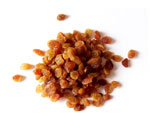Treatment Recommendations for Sexually Abused Adult Patient
Posted by: admin on: November 16, 2011
Sexual assault is all too common, with a lifetime prevalence of upto 39% among women and 3% among men. Here is a clinical recommendation for an approach to sexually assaulted patients.
Team@CMHF
“Sexual assault is a broad term that includes rape, unwanted genital touching, and even forced viewing of or involvement in pornography. Certain populations are at increased risk for sexual assault, including the physically or mentally disabled; homeless persons; persons who are gay, lesbian, bisexual, or transgendered; alcohol and drug users; college students; and persons under the age of 24 years
Recommendations for Treatment
Specific recommendations for treatment of the adult patient after sexual assault include the following:
- The patient should first be examined for acute traumatic physical injuries. After rape, the posterior fourchette, labia minora, and/or hymen may be injured. More subtle anogenital injuries may be better visualized by colposcopy and toluidine blue staining.
- Prophylaxis for sexually transmitted infections (STIs) and pregnancy should be offered.
- If the patient was given drugs to incapacitate her, toxicologic testing may be indicated.
- The emergency medicine clinician should coordinate care, and the patient should be given emotional support by staff members, a rape crisis counselor or social worker, and a sexual assault nurse examiner where available.
- Forensic evidence collection should be offered according to state protocol and should preferably be performed by a sexual assault nurse examiner. In most states, evidence collection is offered even if the patient does not want to immediately report the assault to the police.
- If the patient does decide to report the assault, staff members should offer to call the police.
- Safe plans for hospital discharge are vitally important: these should include planned follow-up for medical care and psychological support.
Clinical implications
Although up to 39% of women and 3% of men may experience sexual assault in their lifetime, most people do not report the assault to law enforcement or present for medical evaluation after the assault. In the United States, fewer than half of rape cases are successfully prosecuted.
Common locations for injuries after rape include the posterior fourchette, labia minora, and hymen. Colposcopy can help identify more subtle signs of trauma. Adults who have experienced a sexual assault should receive prophylaxis against gonorrhea, chlamydia, bacterial vaginosis, hepatitis B, and tetanus
Search
- drchasrani: Difficult to get such a data, authenticated at that. Try Times of India online library
- rakesh pore: hi, where can i get genuine information about "10 most common drugs sold in india?" i want it for a local project
- nilesh dutta: sir, Plz give detail about MBA Sports Management Thanks and Regards


Leave a Reply